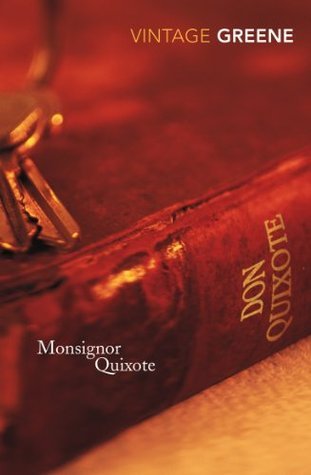What do you think?
Rate this book


196 pages, Kindle Edition
Published October 2, 2010
"[Don Quixote] was a fiction, my bishop says, in the mind of a writer...."
"Perhaps we are all fictions, father, in the mind of God."
"Why are you always saddling me with my ancestor?"
"I was only comparing—"
"You talk about him at every opportunity, you pretend that my saints' books are like his books of chivalry, you compare our little adventures with his. Those Guardia were Guardia, not windmills. I am Father Quixote, and not Don Quixote. I tell you, I exist. My adventures are my own adventures, not his. I go my way—my way—not his. I have free will. I am not tethered to an ancestor who has been dead these four hundred years."
